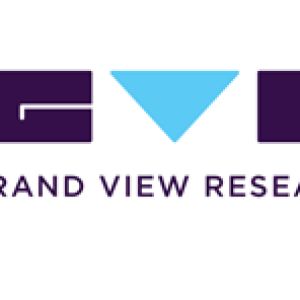Gout Therapeutics market COVID-19 Impact, Trends & Business Statistics By 2025Posted by Mrudula Anil Karmarkar on April 17th, 2023 The global gout therapeutics market is expected to reach a value of USD 8.3 billion By 2025, based on a new report by Grand View Research, Inc. The gout therapeutics market is anticipated to witness significant growth during the forecast period. This can be attributed to the introduction of major urate-lowering agents, approval of effective biologics, and increasing number of patients suffering from chronic gout. In December 2015, AstraZeneca’s product, Zurampic (lesinurad), in combination with xanthine oxidase inhibitor (XOI) received an approval from the U. S. FDA to treat gout. Later in February 2016, the European Commission approved the drug throughout the European Union (EU). Hence, introduction of urate-lowering agents is expected to drive the market. Introduction of biologics to treat gout and increasing adoption of newer therapies further help propel the industry. For instance, in March 2013, Novartis received an EU approval for the product, Ilaris, for use in the treatment of patients suffering from gouty arthritis. Globally, recent introductions & expected launch of the urate-lowering agents in the market, rising incidence of gout due to changing lifestyle, and increasing adoption of the newer agents, during the forecast period are likely to drive the market over the coming years. Presently, gout affects about 1% of the world’s population and 5% of arthritis sufferers across the globe. Several studies estimated that in 2012, prevalence of gout in the U.K. was 2.49% of total population, which had increased by approximately 63.9% as compared to 1997. Hence, increasing demand of this therapy due to rising prevalence is likely to boost the industry. By drug class, Nonsteroidal Anti-inflammatory Agents (NSAIDs) segment accounted for the largest share of the industry. This is attributed to high demand of the NSAIDs due to lower cost, efficiency in relieving pain caused by gout, and increased awareness about the drugs. However, urate-lowering agents are likely to drive the industry during the forecast period due to recent introduction of drugs in the class, expected launches of urate-lowering drugs, and increasing investment by market players to develop the innovative drugs. The biologics has the highest demand due to its ability to produce powerful anti-inflammatory action. To Request Sample Copy of this report, click the link: https://www.grandviewresearch.com/industry-analysis/gout-therapeutics-market/request/rs1 Biologics such as Krystexxa, Canakinumab, and Rilonacept have been introduced in the market. Increasing adoption of these biologics because of their ability to produce powerful anti-inflammatory action is likely to drive the market during the forecast period. Furthermore, several other drugs that are in clinical trials currently are expected to be launched during the forecast period, and are likely to propel the industry. By disease condition, the market of chronic gout dominated in 2015 and is expected to grow with the fastest rate during the forecast period. This is attributed to long term treatment, high cost of drugs, entry of various drugs to treat chronic gout, and increasing adoption of newer therapy due to rising healthcare expenditure. Geographically, North America accounted for the largest share due to market entry of several drugs such as ZURAMPIC, Krystexxa, and Canakinumab along with high adoption of expensive treatments and local presence of major market players. Increasing demand of biologics drugs to treat gout is likely to propel the drug during the forecast period from 2016 to 2024. Further key findings from the study suggest:
Rising prevalence of gout across the globe due to changing lifestyle is likely to boost the industry over the coming years. Increasing alcohol consumption, high purine diet, rising obesity & kidney diseases amongst people, and consumption of certain medications such as diuretics are likely to further boost the incidence of gout. Several regional and multinational players are operating in the market. First-line treatment for acute and chronic gout is dominated by generic drugs. Collaborations and acquisitions of well-established players in the market and development of innovative products are the key strategies adopted by the market players in the region. For instance, in December 2015, Horizon Pharma plc acquired Crealta Holdings LLC, with a strategic motive to expand its orphan business segment and boost rheumatology expertise & infrastructure. In April 2016, AstraZeneca signed a licensing agreement with Ironwood Pharmaceuticals, which granted the latter exclusive rights of Zurampic (lesinurad) for the U. S. The agreement is expected to ensure successful promotion of Zurampic in the U. S. Some of the major companies include Takeda Pharmaceutical Company Ltd.; Novartis AG; Savient Pharmaceuticals; AstraZeneca plc; GlaxoSmithKline plc; Regeneron Pharmaceuticals; and Merck & Co., Inc. Investment in development of innovative & effective therapies and collaborations &partnerships for expanding reach of the products are the key strategies of the industry players. Presently, companies are targeting difficult-to-treat gout population by employing diverse R&D strategies. Introduction of various biologics and expected launch of drugs presently in the pipeline are likely to propel the industry over the coming years. Grand View Research has segmented the gout therapeutics market by drug class, and disease condition: Gout Therapeutics Market Drug Class Outlook (Market Revenue in USD Million, 2014 - 2025)
Gout Therapeutics Market Disease Condition Outlook (Market Revenue in USD Million, 2014 - 2025)
Like it? Share it!More by this author |


